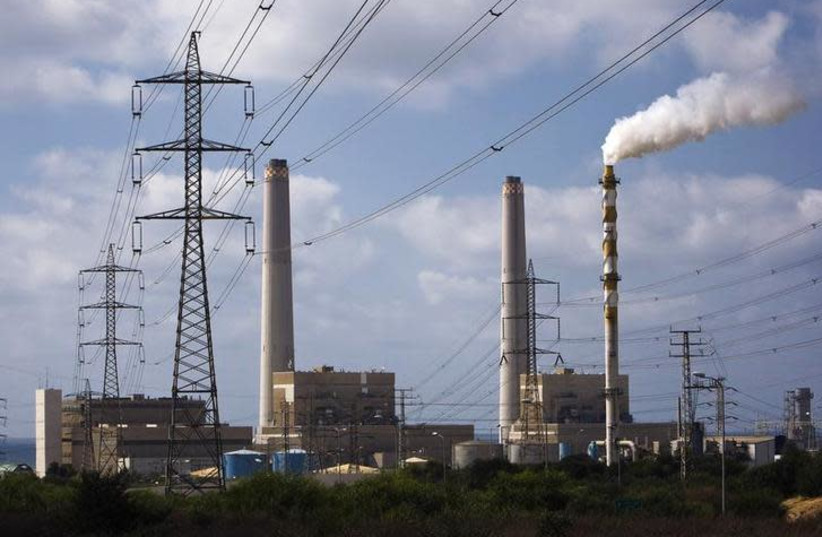Electricity blackouts occur in Israel – including just last week – and around the world from time to time. Most recently, they make governments nervous about the possible involvement of cyberattacks. What causes such breakdowns?
In 2010, Bar-Ilan University (BIU) physics Prof. Shlomo Havlin and colleagues published an article in the journal Nature proposing that the abrupt electricity failure causing the famous 2003 Italy blackout was a consequence of the inter-dependency of two networks. According to Havlin’s theory, the dependency between the power network and its communication system led to cascading failures and abrupt collapse.
Havlin’s seminal work ignited a new field in statistical physics known as “network of networks” or “interdependent networks” and paved the way for understanding and predicting the effects of the interaction between networks. Now, new findings enable experimental studies to control and further develop the multiscale phenomena of complex interdependent materials.
The main innovation in Havlin’s model is the existence of two types of links, which represent two qualitatively different kinds of interactions. Within networks, links between nodes describe connectivity, such as electric power or communication connections.
What did they find?

Between networks, on the other hand, links describe dependency relationships in which the functionality of a node in one network depends on the functionality of a node in the other.
The communication hubs need electricity and the electric power stations depend on communication control. This dependency leads to a cascading effect, in which failure of a single node in one of the networks could lead to an abrupt breakdown of both networks.
Over the past decade, Havlin and others have applied this concept to a variety of abstract systems, such as the Internet, road traffic, the economy, infrastructure and more. But being a theorist, Havlin was unable to present the hypothesis on real experimental physical systems, so the theory couldn’t be confirmed in controlled experiments, nor could it be implemented for device-type applications.
Recently, Havlin joined forces with a colleague, Prof. Aviad Frydman, an experimentalist in BIU’s physics department who specializes in electrical properties of disordered systems – especially superconductors. Their teams included lab manager Dr. Ira Volotsenko and graduate students Dr. Ivan Bonamassa, Bnaya Gross and Maayan Laav.
Superconductivity is a phenomenon observed in certain metals in which electric resistance vanishes when the system is cooled down below a critical temperature.
Inspired by Havlin’s theory, Frydman’s group developed a controlled system of interdependent superconducting networks, a physical analogy to the interdependent networks involved in the Italy blackout.
The two superconducting networks are separated by a layer which is an electric insulator, but enables the transfer of heat between the networks, thus creating a system of two types of interactions. Within each layer, the electric currents represent connectivity links, while the heat flowing between networks represents dependency links since it can disrupt the superconductivity segments.
The breakthrough study establishes the first physics laboratory benchmark for the manifestation of the theory of interdependent networks, enabling experimental studies to control and to further develop the multiscale phenomena of complex interdependent materials.
The research conducted by the two groups, just published in the prestigious journal Nature Physics, shows that while separate, uncoupled networks exhibit a smooth, continuous transition between a superconductor and a normal metal as temperature is increased, coupled systems show an abrupt, discontinuous transition, as predicted by the theory.
This research has vast significance in several disciplines, including basic physics, materials science and device applications. In basic physics, the scientific impact is in the discovery of new physics phenomena related to phase transitions.
The results may also lead to the establishment of a new field of network metamaterials, based on coupled layers with different inter-layer interactions exhibiting novel physics phenomena. The research also indicates that the abrupt breakdown of a network system may be a desirable phenomenon.
If harnessed, it can be applied toward engineering self-healing systems or to devise high-sensitive switchers or sensors, for example, for single-photon detection.
While network science originated from physics in 2000, its subsequent development and applications have benefited almost all other scientific and technological fields. The present study reconnects network science and physics.
It is the first to demonstrate that novel concepts developed by network science can significantly benefit physics, while discovering novel physical processes, such as new types of phase transitions, when studying interdependent physical systems.
